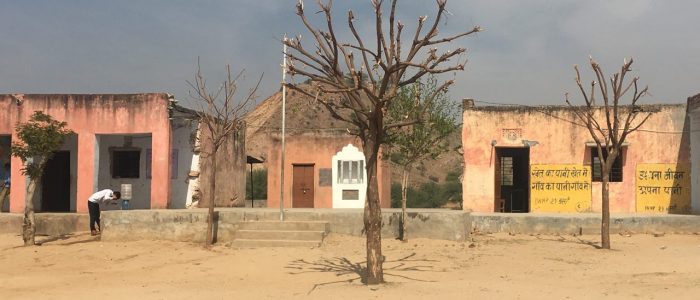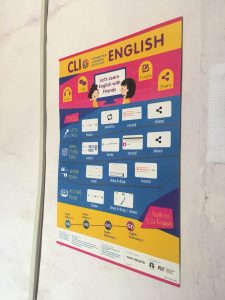Two steps forward, one step back: Change in a Village School in Rajasthan (05.02.18 – 07.02.18)
The Kuthadakalan village school is located about 20 kilometres from Jaipur city. I’ve seen this school through three seasons. The cattle at the gate and the bare trees greet me come wind or rain. Nothing has changed on the outside. But my research notes show that something is beginning to stir on the inside. I take you on my journey so far with this school to show what early adoption of technology in school looks like.
Every school visit brings a mix of emotions. I’ve swayed between false optimism and fatal cynicism, with the balance now tilting in favour of hopeful anticipation.
My first visit to Kuthadakalan in February 2017 was marked by a sense of exhilaration. Inside the cold and dark computer lab, 25 Class IX students in headsets, sat huddled in front of 10 computers, doing English modules on the Unplatform.
When I went back in July 2017 with the new CLIx platform, a new batch of Class IX students, with no previous exposure to computers, entered the lab. Inside the hot and stuffy lab, students struggled with the basics. They didn’t know how to turn the Caps Lock on or even how to move the mouse cursor. Hall and Hord (2011) say that using an innovation is a change ‘process’ rather than an ‘event’, with users gradually progressing through levels of use (LoU) (see Table 1). Despite the CLIx team’s efforts in 2016, the school was back to the stage of non-use as CLIx had worked only with Class IX in 2016. A year later, it was a new batch and login looked like an insurmountable task. I came back confused, wondering if I felt disenchantment or hope.
 Frequent visits by the field support person to Kuthadakalan as described in the blog by our Field Support Person have resulted in positive implications for adoption. CLIx has made its way into the school timetable. The English teacher enables regular access to computers and the lab looks more welcoming. This is what I found in my most recent visit to the school during 5-7 February 2018.
Frequent visits by the field support person to Kuthadakalan as described in the blog by our Field Support Person have resulted in positive implications for adoption. CLIx has made its way into the school timetable. The English teacher enables regular access to computers and the lab looks more welcoming. This is what I found in my most recent visit to the school during 5-7 February 2018.
There are also indicators of changes in the LoU of students The average time to login has decreased from 30 minutes in July 2017 to 10 minutes in November 2017 to 30 seconds in February 2018. Most students navigate the platform with ease. They handle pop-ups expertly, rectify wrong navigation and effortlessly complete drag-and-drop actions. Though they still type with a single finger, typing is an activity no student pair skips. Unfortunately, no one has attempted the speech recording activity, claiming that they don’t know how to use the tool. Peer discussions are few and are limited to technical troubleshooting or prompting an answer.
As a curriculum designer, I had imagined the CLIx classroom in a certain way, but every implementer has a different model of adoption and exact replication is unlikely (Hall, 2010). To achieve widespread and effective use of the CLIx modules, we must explore how this process of technology adoption can be made more instructive and meaningful for teachers.
References:
Hall, G. E. (2010). Technology’s Achilles heel: Achieving high-quality implementation. Journal of Research on Technology in Education, 42(3), 231-253.
Jennifer Thomas, Team lead and Assistant Professor, English team, CLIx






This is wonderfully written, Jennifer. The blend of academic and conversational styles is really good.
Thank you, Anusha! Heartening to receive responses.
Well done jenny , it ia an eye opener for us, keep writing so that we have an idea what is happening. All the best.
Very nicely written Jenny.You always share your experience which helps me to understand what is happening in other states .
All the best ! Keep writing !
Thanks for sharing! No doubt implementation is extremely challenging even for a simple thing in India. In some organisations I have worked – there is no separate design team – its one team which has people from implementation as well and everyone is responsible to ensure implementation as its designed or make necessary changes – the boardroom needs to be very close to school labs.
Look forward to your next post!